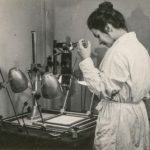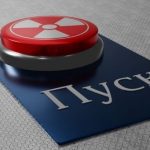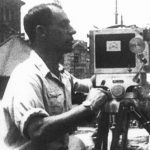 Technology
Technology  Technology
Technology  Humans
Humans 10 Everyday Human Behaviors That Are Actually Survival Instincts
 Animals
Animals 10 Animals That Humiliated and Harmed Historical Leaders
 History
History 10 Most Influential Protests in Modern History
 Creepy
Creepy 10 More Representations of Death from Myth, Legend, and Folktale
 Technology
Technology 10 Scientific Breakthroughs of 2025 That’ll Change Everything
 Our World
Our World 10 Ways Icelandic Culture Makes Other Countries Look Boring
 Misconceptions
Misconceptions 10 Common Misconceptions About the Victorian Era
 Mysteries
Mysteries 10 Strange Unexplained Mysteries of 2025
 Miscellaneous
Miscellaneous 10 of History’s Most Bell-Ringing Finishing Moves
 Technology
Technology Top 10 Everyday Tech Buzzwords That Hide a Darker Past
 Humans
Humans 10 Everyday Human Behaviors That Are Actually Survival Instincts
 Animals
Animals 10 Animals That Humiliated and Harmed Historical Leaders
Who's Behind Listverse?

Jamie Frater
Head Editor
Jamie founded Listverse due to an insatiable desire to share fascinating, obscure, and bizarre facts. He has been a guest speaker on numerous national radio and television stations and is a five time published author.
More About Us History
History 10 Most Influential Protests in Modern History
 Creepy
Creepy 10 More Representations of Death from Myth, Legend, and Folktale
 Technology
Technology 10 Scientific Breakthroughs of 2025 That’ll Change Everything
 Our World
Our World 10 Ways Icelandic Culture Makes Other Countries Look Boring
 Misconceptions
Misconceptions 10 Common Misconceptions About the Victorian Era
 Mysteries
Mysteries 10 Strange Unexplained Mysteries of 2025
 Miscellaneous
Miscellaneous 10 of History’s Most Bell-Ringing Finishing Moves
10 Things the Nazis Actually Deserve Credit for Inventing
While the Nazis were one of the most awful and destructive forces in the long history of humanity, they were also notable inventors. Surprisingly, Adolf Hitler’s underlings invented quite a few important and major things during their run in Germany and their spread across Europe in the 1930s and 1940s.
In this list, we’ll take a look at ten surprising things that the Nazis actually invented. These ten items changed the way the world worked in their own ways. They were very often instruments of war, considering Hitler’s bellicose ways. But not always! Some longer-lasting inventions came out of Germany during that period and have remained in the mix ever since. What follows are ten of those interesting stories.
Related: Ten Books Burned by the Nazis
10 Anti-Ship Guided Missiles
An anti-ship missile is a common national defense tool used in the modern age. It is a guided, heat-seeking missile that is deployed to fight against the presence of large military watercraft and other boats. Most current-day anti-ship missiles are of the sea-skimming variety.
In the modern era, many of these rely on a deadly combination of inertial guidance and complicated radar homing once locked onto a target and fired off to go in for the kill. But nearly a century ago, the Nazis invented and (for the time, at least) pretty much perfected the use of anti-ship missiles with only primitive radio command guidance.
First developed by military scientists in Nazi Germany in the late 1930s, anti-ship missiles saw their first most serious run of success in the Mediterranean Theater of World War II in 1943 and 1944. There, the Nazis’ missiles used both radio commands and some primitive forms of infrared homing to pick up on and follow the heat emitted by ships.
They had great success, too, damaging or sinking dozens of Allied warships. Most notably, Nazi missiles took down the Italian battleship Roma and the light cruiser USS Savannah. In the decades since, other nations—most notably China—have employed updated versions of these missiles with formidable success.[1]
9 Ballistic Missiles
A ballistic missile is a type of weapon that basically uses projectile motion to launch up into the air and deliver one (or a set of) warheads onto a target at another destination. Many of these missiles stay within Earth’s atmosphere. However, modern-day intercontinental ballistic missiles (ICBMs) are actually capable of leaving the atmosphere and making orbital flight.
But back in the 1930s, the Nazis hadn’t gotten that far with the development yet. They were more concerned with bombing Paris and France and using what was at the time considered very long-range technology to do it. Enter a man named Wernher von Braun. He was the director of a Nazi program in the late 1930s that developed the pioneering ballistic missile known as the A-4, and later more commonly as the V-2.
On October 3, 1942, Nazi Germany successfully launched a V-2 missile in a test flight. Then, not even two years later, they put them into active military use in attacks on both Paris and London. By the end of World War II in Europe in May of 1945, the Nazis had used more than 3,000 V-2s and other ballistic missiles against the Allies, and the technology was here to stay forever.[2]
8 Jägermeister
Jägermeister has been made in the small German town of Wolfenbüttel by the local Mast family since at least 1878. However, it wasn’t commercialized and sold nationwide until 1935, when a man named Curt Mast began to popularize the drink around Nazi Germany. Curt was a big fan of hunting, and he wanted to make the drink a tool that could help hunters get through long, lonely, and cold nights in the forest.
He also was smart enough to popularize it as a remedy for coughs and digestive problems, if you can believe it. So rather than being the party spirit that we know today, Jägermeister back then was seen as something of a health elixir. It didn’t take long for Jägermeister to become a hit across Nazi Germany.
Curt’s connections led all the way up to the top of the Nazi’s political structure, too. Hermann Göring, who was one of Adolf Hitler’s right-hand men and closest advisors, was key in popularizing the drink among the top officials of the Third Reich. They, in turn, spread its good taste and seemingly positive use down to their underlings.
By the war’s end, Mast and his family had gotten what they wanted, and Jägermeister was a staple in Germany. Soon, it would grow its profile across the world. And it’s all thanks to the Nazis, who signed off on it as a tonic and elixir of great import during World War II.[3]
7 Fanta
Max Keith was a German businessman born in 1903 who rose to become the head of Coca-Cola GmbH by the late 1930s. The company was the major German bottler of Coca-Cola during the reign of the Third Reich. Upon the outbreak of World War II, the ingredients for bottling Coca-Cola in Nazi Germany became harder and harder to come by.
Not daunted by this problem, Keith linked up with the Nazi’s political bureaucracy and was appointed to a position in the “Office of Enemy Property.” There, he avoided the nationalization of Coca-Cola’s German subsidiary. However, he still couldn’t get the stuff shipped in from America. So he invented Fanta to make up for it.
To keep up with consumers’ desires for a sweet and fizzy soft drink, Keith developed a fruit-flavored beverage made out of apple fibers that had been left over from cider pressings. He called the drink Fanta. It was an instant hit, selling more than three million cases in 1943. After the war ended, Keith and his employees retained control over the Fanta manufacturing and distributing process in Germany. It soon expanded its reach all over the globe.[4]
6 Night Vision Technology
Night vision technology was first thought up by a Hungarian physicist in 1929. However, the technology was quickly overtaken and used by the Nazis. By 1935, the Germans were developing their first night vision devices. And as early as 1939, they were using these devices in World War II against the Allies.
By mid-1943, the Germans had even figured out how to place night vision devices and telescopic rangefinders on Panther tanks that were out in battle all across Western Europe. Those tests and developments continued through 1944 until March 1945. Dozens of Panther tanks were equipped with FG 1250 infrared night vision devices mounted to the tops of them to account for aiming weapons after dark.
Those tanks saw combat on both the Eastern and Western Fronts of the war. Even though they obviously didn’t bring the Nazis a victory by the end of it all, they were critically important and dangerous tools in their toolbox amid the long fight.[5]
5 Chloroquine
Chloroquine is a medication that has become very critical in its use for treating malaria. Certain types of malaria, including various strains of the disease and complicated cases that have festered with host bodies, need more than quinine to fight back against it. Chloroquine has proven to be up to the task in rainforest climates and jungle areas.
In addition, the medicine is occasionally used for treating other issues including rheumatoid arthritis, lupus erythematosus, and even occasionally in fighting an intestinal parasite known as amebiasis. And it was all invented by the Nazis!
The story of chloroquine actually starts during World War I. The German government hoped to find a better alternative to quinine during the war and for their colonies that were spread out in far-flung places like New Guinea at that time. So scientists got to work. By the time the Nazis rolled into power, their scientists had finally developed a workable quinine substitute.
In 1934, the synthetic analog chloroquine was discovered and perfected by a German man named Hans Andersag and several of his colleagues at the country’s Bayer laboratories. At the time, they called it Resochin. However, they shelved it for a while because it was initially too toxic to be used on humans. But during the middle of World War II, the Nazis continued to perfect the formula.
Eventually, by the early 1940s, the German Africa Corps was regularly using the chloroquine analog 3-methyl-chloroquine, which they called Sontochin. When the Allies landed in Tunisia, they got their hands on some of that Sontochin and began to study it. Samples were sent back to the United States for testing, and American scientists eventually perfected chloroquine that was safe and effective enough for human use. But it surprisingly all started with the Nazis![6]
4 Jerrycan
A jerrycan is a very useful fuel container that is made out of pressed steel and designed in a particular way to allow it to be easy to pour out gasoline. It was initially developed by the Nazis in the middle of the 1930s for military use. At the time, it held about 20 liters (a little more than 5 gallons) of fuel.
The jerrycan was so useful and efficient in being able to safely carry and efficiently pour out fuel that its use spread extremely quickly. During World War II, the Nazi troops took them everywhere they went. Then, when the Allies came across jerrycans after battles, they quickly co-opted them for use on their front, as well.
Now, we know what you’re thinking: It’s a fuel can! What’s the big deal? Well, that’s just the thing. Earlier designs of fuel cans required specific tools and funnels to use in order to be able to pour out the fuel safely and effectively into a tank or engine. So the can alone couldn’t be transported without bringing along those critical extra parts.
However, the jerrycan did away with all that! It was a one-stop shop for moving and using fuel while on the road. And for wartime battalions on the move and under heavy duress, it was extremely important.[7]
3 Polyurethane
Polyurethane is a remarkably resilient and important plastic material that has come to exist in various forms. In the modern era, it is the material of choice in such a wide range of consumer products and industrial applications alike that it’s nearly impossible to boil it down to just a few key uses. It’s found in (and makes up) everything from car parts to mattresses, adhesives, shoe soles, sportswear, rollers, tires, furniture cushioning, refrigerator insulation, building insulation, and much more! So, to say it’s a critical substance for life in the modern world is quite an understatement.
To that end, it’s interesting to note that it was, in fact, the Nazis who invented and first moved to perfect it. Polyurethanes were first created in Germany in the late 1930s by Dr. Otto Bayer. Bayer and his team of scientists were trying to figure out how to make a substance that could be a reliable replacement for rubber.
During World War II, rubber was very expensive and very hard to obtain, even if one did have the money to pay for it. So the Germans set out to make a different kind of substance that could be used for coatings, tires, weapons finishes, and more. It spun off after the war into what it became today, and now polyurethanes are incredibly common all over the world. But they, too, started as a Nazi idea came to life![8]
2 Silver Arrows
The “Silver Arrow” is a name typically given to a very specific type of sports car that was first connected to Nazi-era German auto manufacturers. Before World War II, in the early 1930s, German carmakers Mercedes and Auto Union dominated pre-war car racing in Europe and increasingly around the world.
Hitler loved their dominance, and he implored them to make newer, more powerful cars to win races worldwide. So, as the 1930s carried on, that’s just what they did. Nazi Germany’s most dominant car brand Mercedes-Benz was the most notable of these with their Silver Arrow racing cars put out between 1934 and 1939.
Production for both Mercedes and Auto Union mostly halted during World War II, of course. But soon after that, as Germany recovered from its postwar haze, the Silver Arrow name was transferred over to apply to Mercedes’s Formula One racers and sports cars that were once again popular worldwide in the mid-1950s. By now, the name and look of the Silver Arrow are iconic to car racing fans everywhere. If they only knew how much Hitler loved it nearly a century ago![9]
1 Methadone
Methadone was initially developed by scientists in Germany working on behalf of the Nazis back in 1937. These experts were working on a project for the organization I.G. Farbenindustrie AG when they were ordered to look for a synthetic opioid that could be readily made with available precursors. See, the Nazis were interested in solving a serious problem they were facing: the looming threat of a major shortage of opium and morphine.
By September 1941, the Nazi-held manufacturer and its scientists had applied for a patent for the synthetic substance that they had developed. We know it as methadone today, but they called it both Hoechst 10820 and Polamidon (with that second term still in use in Germany today).
The patent was approved, safety testing was carried out, and the product was eventually brought to market in 1943. For the last two years of World War II, the German Army regularly used it as a substitute for morphine. After the war, it then developed into the drug that we know today, most commonly in the modern era, as it is used to counteract the addiction effects of things like heroin.[10]








